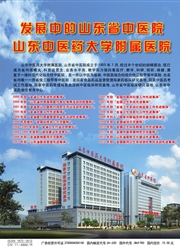

 中文摘要:
中文摘要:
目的:探讨周围性面瘫患者静息态脑功能成像(fMRI)功能连接变化。方法:研究对象分为2组,面瘫组16例,为左侧周围性面瘫患者;对照组39例,为健康志愿者。所有受试者均采用相同的MRI扫描序列采集静息态功能数据,并利用AFNI程序进行脑功能连接分析。功能连接分析共选择双侧后扣带回(PCC)、左侧面部初级感觉皮层(LSⅠ)、右侧面部初级感觉皮层(RSⅠ)、左侧面部初级运动皮层(LMⅠ)、右侧面部初级运动皮层(RMⅠ)5个区域为感兴趣区(种子点)。采用单样本t检验(P〈0.001)进行功能连接的组内分析和两样本t检验(P〈0.01)进行组间分析,所有的分析结果均采用MonteCarlo方法进行多重比较校正。结果:周围性面瘫组和对照组的组内分析结果显示,双侧PCC、LSⅠ、RSⅠ、LMⅠ和RMⅠ均与多个脑区(大脑、小脑、丘脑以及基底节区等灰质区域)存在着广泛性的功能连接;组间分析结果显示2组间PCC、RSⅠ、RMⅠ的功能连接没有差异;周围性面瘫组较健康志愿者组LSⅠ、LMⅠ的功能连接2组间存在差异。LSⅠ的组间分析显示,LSⅠ与双侧扣带回、楔前叶、左侧楔叶、枕上回及枕中回的功能连接增强;LMⅠ的组间分析显示,LMⅠ与双侧扣带回、楔前叶、右侧额中回、额下回、中央前回、颞上回、颞中回、颞横回、顶下小叶、枕中回、角回、尾状核、苍白球、丘脑、岛叶及左侧枕上回等脑区的功能连接增强。结论:左侧周围性面瘫患者的静息态脑功能网络变化主要表现为同侧大脑半球面部初级感觉皮层和面部初级运动皮层与相关脑区的功能连接增强。功能连接增强的脑区主要分布于感觉相关脑区和运动相关脑区,推测可能与面瘫患者面部运动感觉障碍的脑功能代偿作用有关。
 英文摘要:
英文摘要:
Objective: To study the functional connectivity of resting-state fMRI in peripheral facial paralysis.Methods: Study subjects were divided into two groups.The palsy group was composed of 16 cases of patients with left peripheral facial palsy,and control group was 39 healthy volunteers.Resting-state fMRI data was acquired with the same magnetic resonance scan sequence in both groups.Functional connectivity analysis was performed with the program of AFNI,and the selected regions of interest(seed point)were bilateral posterior cingulate cortex(PCC),left primary somatosensory cortex of face(LSI),right primary somatosensory cortex of face(RSI),left primary motor cortex of face(LMI),right primary motor cortex of face(RMI).Intra-group analysis was done with one sample t-test(P〈0.001)and inter-group analysis was done with two sample t-test(P〈0.01).Results: The intra-group analysis of PCC,LSI,RSI,LMI,RMI in both groups showed extensive functional connectivity with the other cerebral and cerebellar areas.Inter-group analysis of PCC,RSI,RMI showed that there was no significant difference between the two groups.However,functional connectivity of LSI,LMI between the two groups was different significantly.The inter-group analysis of LSI showed enhanced connection with bilateral posterior cingulate,precuneus,left cuneus,occipitales superior gyrus and occipitales middle gyrus;and the inter-group analysis of LSI showed enhanced connection with bilateral posterior cingulate,precuneus,right middle frontal gyrus,inferior frontal gyrus,precentral gyrus,superior temporal gyrus,middle temporal gyrus,transverse temporal gyrus,inferior parietal lobule,occipitales middle gyrus,angular gyrus,lentiform nucleus,claustrum,thalamus,insula and left occipitales superior gyrus.Conclusion: It was demonstrated that there was significant change in brain functional connectivity of patients with peripheral facial paralysis.The change was mainly demonstrated as enhanced functional connection of ipsilateral pri
 同期刊论文项目
同期刊论文项目
 同项目期刊论文
同项目期刊论文
 期刊信息
期刊信息
